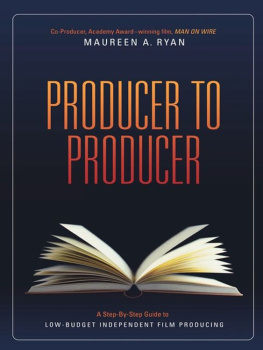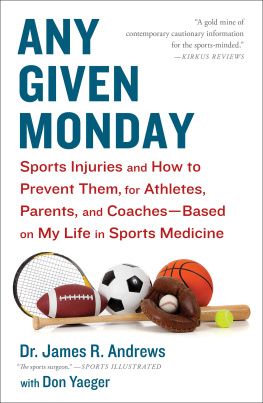
PUBLISHED BY DOUBLEDAY
a division of Bantam Doubleday Dell Publishing Group, Inc. 1540 Broadway, New York, New York 10036
D OUBLEDAY and the portrayal of an anchor with a dolphin are trademarks of Doubleday, a division of Bantam Doubleday Dell Publishing Group, Inc.
Book Design by Gretchen Achilles
Library of Congress Cataloging-in-Publication Data
Ryan, Joan, 1959
Little girls in pretty boxes : the making and breaking of elite gymnasts and figure skaters / Joan Ryan. 1st ed.
p. cm.
1. Gymnastics for girlsUnited States. 2. Figure skatingUnited States. 3. Women athletesAbuse ofUnited States. 4. SportsUnited StatesMoral and ethical aspects. I. Title.
GV464.R93 1995
796.4408352dc20
94-43317
eISBN: 978-0-307-82855-2
Copyright 1995 by Joan Ryan
All Rights Reserved
v3.1
To Barry and Ryan
CONTENTS
If It Isnt Bleeding, Dont Worry About It:
Injuries
They Stole Her Soul and They Still Have It:
Eating Disorders
Be Thin and Win:
Image
Do It for America:
Pressure
We All Became Junkies:
Parents
The Game Within the Game:
Politics and Money
Whatever It Takes:
Coaches
INTRODUCTION
T he little girls marched into the Atlanta arena in single file, heads high, shoulders back, bare toes pointed. Under hair ribbons and rouged cheeks, their balletic bodies flowed past bleachers where expectant fathers craned forward with videocameras. Small and pretty in their shimmery leotards, the girls looked like trinkets from a Tiffany box. They lined up facing the crowd, and when the announcer summoned the winners of the Peachtree Classic, the gymnasts stepped forward and bowed their heads as soberly as Nobel laureates to receive their medals. Mothers with scoresheets tucked under their arms clapped until their hands hurt, shooting hopeful glances at the ESPN cameras roving among the girls. Along velvet ropes strung across the base of the bleachers, awestruck seven- and eight-year-olds stretched toward the winning gymnasts clutching programs and gym bags for them to sign.
On the opposite coast, at a skating rink in Redwood City, California, one fifteen-year-old skaterin a ponytail, braces and baby-blue sequinsstood at the edge of the rink, eyes wide, listening to her coachs last-minute instructions as her parents held hands in the bleachers, packed solid for the Pacific Coast Sectional Championships. She glided to the center of the ice. Then, as her music began, she spun like a jewel-box ballerina, executing the intricate choreography of leaps and footwork she had practiced nearly every day for as long as she could remember. On her -inch skate blades rode her hopes of qualifying for the U.S. Figure Skating Championships, moving her one step closer to the Winter Olympic Games.
In gyms and rinks across the country, the air is thick with the scent of the Olympics. And the parents, coaches and young athletes chase it like hounds, impatient for the rewards of the sports that captivate American audiences as no others do. Gymnasts and figure skaters hold a unique and cherished place among American athletes. Gymnasts are the darlings of the Summer Games, figure skaters the ice princesses of the Winter Games. Every four years they keep us glued to our televisions for two weeks with their grace, agility, youth and beauty. They land on magazine covers, Wheaties boxes, the Today show. Television ratings for Olympic gymnastics and figure skating events rank among the highest for any sport on television. Helped by the Tonya Harding-Nancy Kerrigan saga, the womens technical program at the 1994 Winter Games drew the fourth-highest rating of any show in the history of television, placing it up there with the final episode of M*A*S*H. But even at the controversy-free 1992 Winter Games, womens figure skating attracted a larger television audience than either the final game of the 1992 World Series or the 1992 National Collegiate Athletic Association basketball championship game between Michigan and Duke. Americans are so enchanted by gymnasts and figure skaters that in a 1991 survey they chose gymnast Mary Lou Retton and skater Dorothy Hamillboth long retiredas their favorite athletes, beating out the likes of Chris Evert, Michael Jordan and Magic Johnson.
Yet while gymnastics and figure skating are among the mostwatched sports in the country, the least is known about the lives of their athletes (with the exceptions, of course, of Harding and Kerrigan). We watch thirteen-year-old Michelle Kwan, an eighth grader, land six triple jumps to finish second at the 1994 U.S. Figure Skating Championships. We see sixteen-year-old Shannon Miller soar above the balance beam as if it were a trampoline to win a silver medal at the 1992 Olympics. But we know little about how they achieve so much at such a young age or what becomes of them when they leave their sport.
Unlike womens tennis, a sport in which teenage girls rise to the highest echelon year after year in highly televised championships, gymnastics and figure skating flutter across our screens as ephemerally as butterflies. We know about tennis burnout, about Tracy Austin, Andrea Jaeger, Mary Pierce and, more recently, about Jennifer Capriati, who turned pro with $5 million in endorsement contracts at age thirteen and ended up four years later in a Florida motel room, blank-eyed and disheveled, sharing drugs with runaways. But we hear precious little about the young female gymnasts and figure skaters who perform magnificent feats of physical strength and agility, and even less about their casualties. How do the extraordinary demands of their training shape these young girls? What price do their bodies and psyches pay?
I set out to answer some of these questions during three months of research for an article that ran in the San Francisco Examiner, but when I finished I couldnt close my notebook. I took a years leave to continue my research, focusing this time on the girls who never made it, not just on the champions.
What I found was a story about legal, even celebrated, child abuse. In the dark troughs along the road to the Olympics lay the bodies of the girls who stumbled on the way, broken by the work, pressure and humiliation. I found a girl whose father left the family when she quit gymnastics at age thirteen, who scraped her arms and legs with razors to dull her emotional pain and who needed a two-hour pass from a psychiatric hospital to attend her high school graduation. Girls who broke their necks and backs. One who so desperately sought the perfect, weightless gymnastics body that she starved herself to death. Othersmanywho became so obsessive about controlling their weight that they lost control of themselves instead, falling into the potentially fatal cycle of bingeing on food, then purging by vomiting or taking laxatives. One who was sexually abused by her coach and one who was sodomized for four years by the father of a teammate. I found a girl who felt such shame at not making the Olympic team that she slit her wrists. A skater who underwent plastic surgery when a judge said her nose was distracting. A father who handed custody of his daughter over to her coach so she could keep skating. A coach who fed his gymnasts so little that federation officials had to smuggle food into their hotel rooms. A mother who hid her childs chicken pox with makeup so she could compete. Coaches who motivated their athletes by calling them imbeciles, idiots, pigs, cows.
















